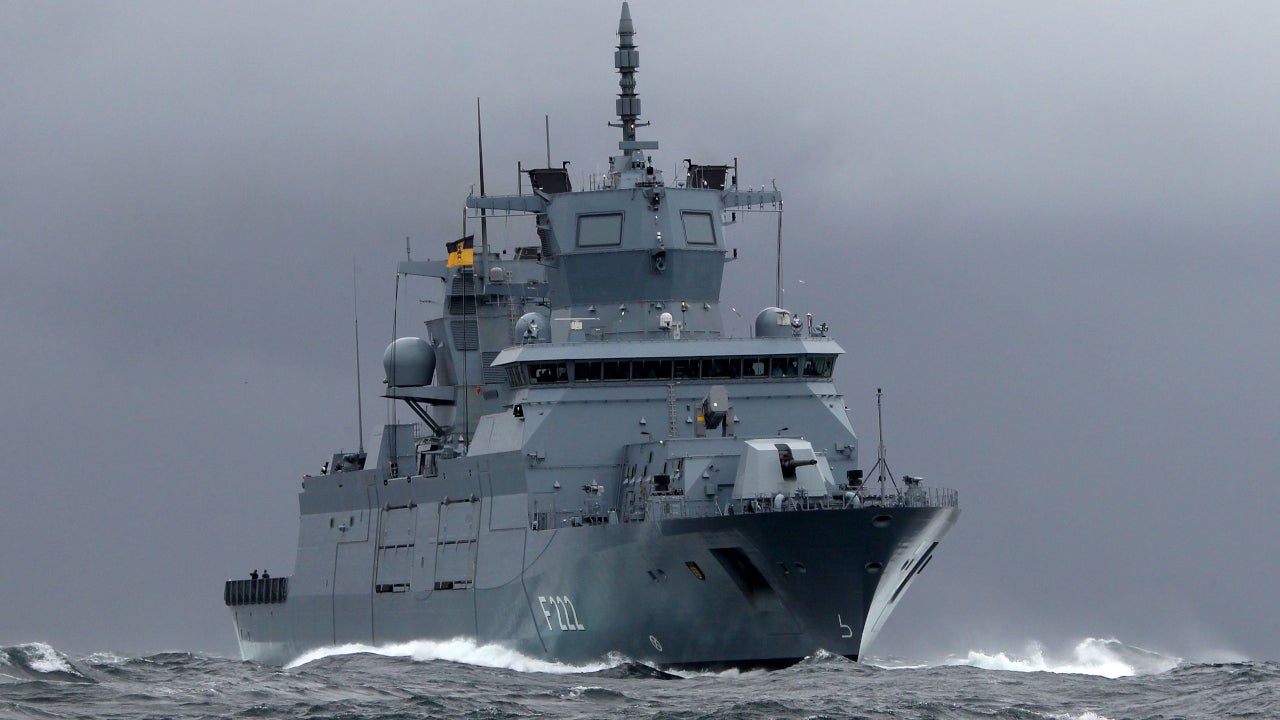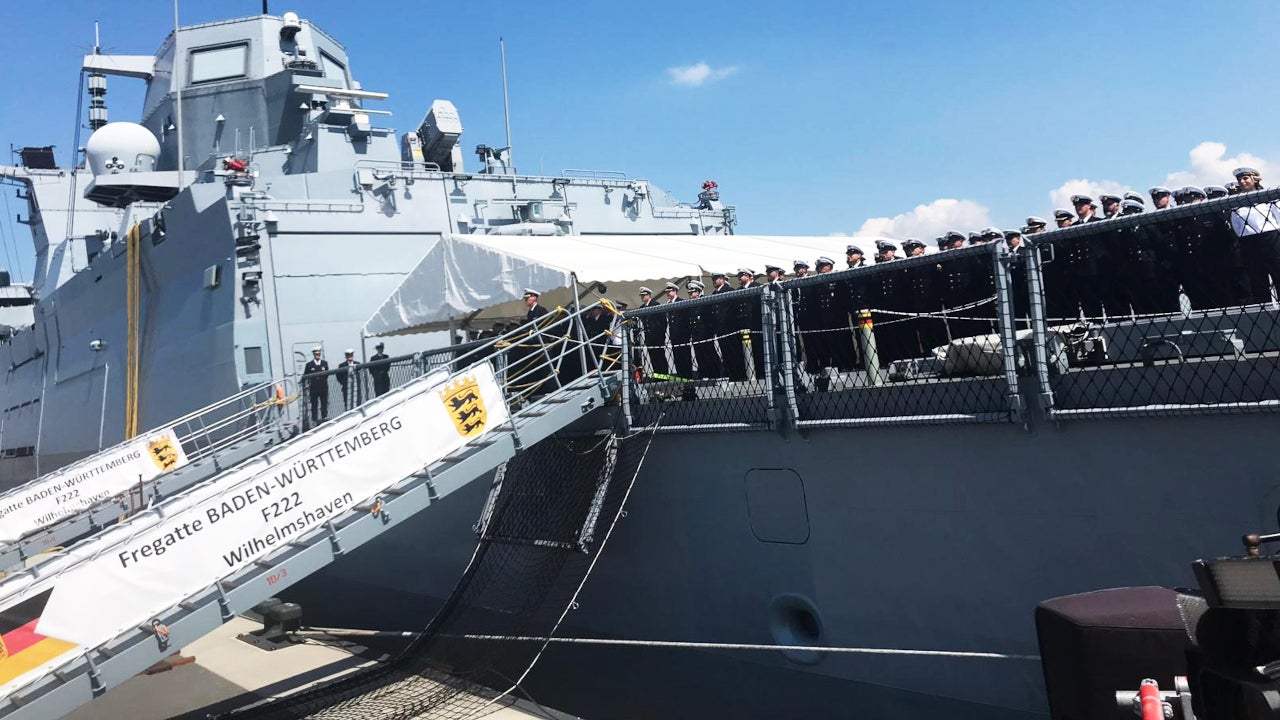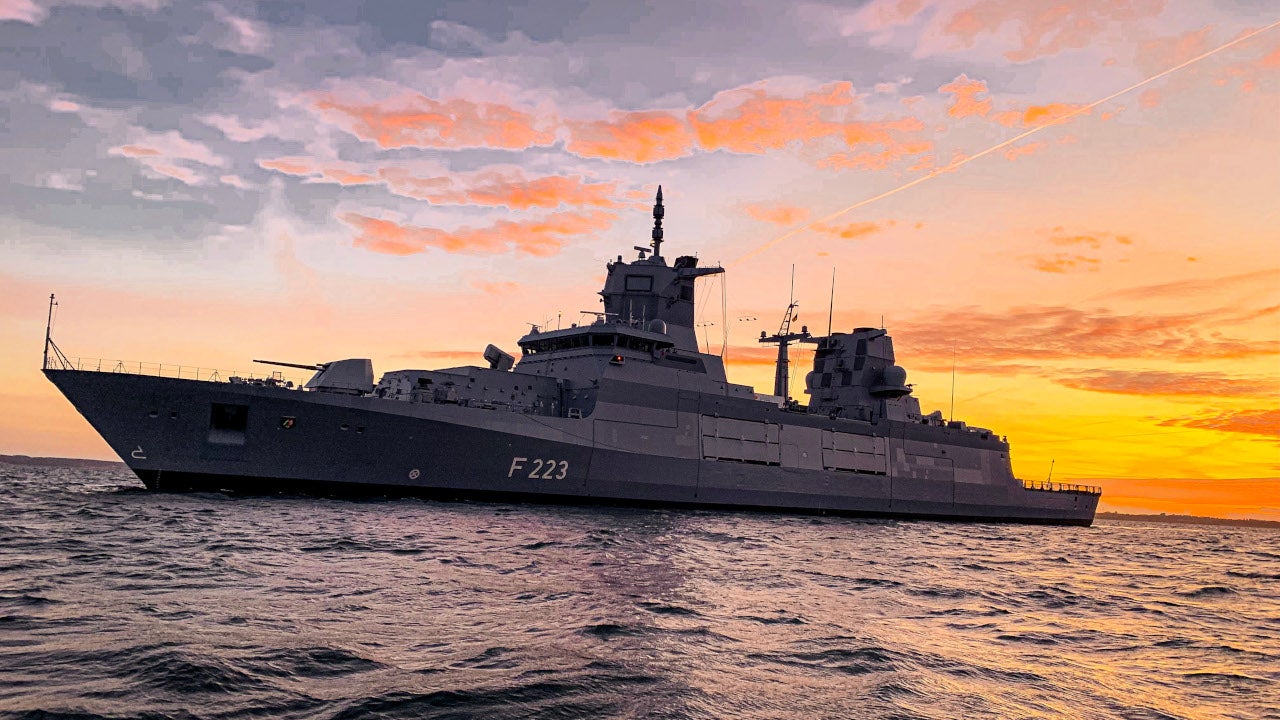F125 is a multi-role frigate designed and built by Arge F125 consortium for the German Navy. F125 is the project name for the Type 125 Baden-Württemberg class of frigates.
The German Navy’s latest F125 frigates can be deployed worldwide for up to two years before returning to the home base. They are capable of operating for up to 5,000h a year, even under tropical conditions.
The main mission of the F125 frigate is to take part in joint assignments, including multinational assignments in network-centric operations.
F125 frigate programme
The German Navy started to plan a successor for the F122 Bremen Class frigates in 1997.
The concept of the replacement frigates was originally as a multi-role combatant, but by 2005, the requirement for the F125 was based on a capability to counter asymmetric threats and perform stabilisation operations with lethal and non-lethal intervention.
The German Navy announced that the F125 would be armed with land-attack systems and air warfare point-defence equipment but would not be equipped with sonar.
In June 2007, ThyssenKrupp announced the Arge F125 consortium had been contracted by the German Federal Office for Defence Technology and Procurement (BWB) for four F125 frigates. The Arge F125 consortium comprises industrial leader ThyssenKrupp Marine Systems (including Blohm + Voss and Nordseewerke) with Lurssen Werft.
Construction began in May 2011 and the first frigate Baden-Württemberg was christened at ThyssenKrupp Marine Systems’ Hamburg site in December 2013. The ceremony for the second frigate Nordrhein-Westfalen took place in April 2015.
Another keel was laid at the Hamburg site in June 2014 for Sachsen-Anhalt, the third frigate, before final 125-class frigate Rheinland-Pfalz had its keel laid in January 2015.
Sachsen-Anhalt and Rheinland-Pfalz were christened in March 2016 and May 2017 respectively.
Delivery of the first of class F125 was made in 2016. However, it was returned to the manufacturer due to a technical rectification. Later, the frigate entered the German Navy’s service in June 2019.
The second vessel in the class Nordrhein-Westfalen is delivered in March 2020 and was commissioned in June 2020. The third and final vessel will be handed over in 2021.
Design and features
The 5,500t frigate has a new and stealthy design of hull and superstructure, which appears to be based on a highly modified Meko-D configuration. It has an overall length of 149.6m, a beam of 18.8m and displacement of 7,200t.
Each frigate has two crews comprising 105 to 120 people, who are changed every four months. The number of crew represents an approximate 50% reduction in staff compared with previous generation frigates, achieved partly through a high level of automation.
The frigate also accommodates 50 special forces soldiers and their equipment. Two helicopters or four armed boats can provide the necessary transport.
The frigate has a 490m² aft helicopter deck and a hangar for two NH-90 helicopters, which each have a range of 790km.
Command and control
In March 2006, Airbus SE was contracted to supply the F125 command, control and weapons deployment system, FuWES (Fuhrungs-und Waffeneinsatzsystem). At that time, the company was known as the European Aeronautic Defence and Space Company (EADS).
The deal covered the development and delivery of the system, including the complete software, hardware and infrastructure as well as the FuWES testing and performance verification for all four frigates.
The FuWES system has an open and modular structure, allowing flexibility to accommodate future additional or modified systems.
In order to provide tactical data exchange and a high level of interoperability with other joint and combined military platforms, the communications systems link 11, link 16 and link 22 are integrated into the F125 command and control system.
The combat management system is operated from the Atlas Elektronik OMADA consoles, designed specifically for the F125.
Integrated bridge and navigation system
Raytheon Anschutz in Kiel, Germany, was contracted in August 2008 for the supply of the integrated bridge and navigation system for the F125 frigates. It was previously known as Anshutz & Co, a Carl Zeiss subsidiary.
The integrated bridge and navigation system consists of six multi-function consoles that are capable of displaying various functions such as two X/S-band radars, two electronic chart display and information systems (ECDIS) and NautoConning navigation data, which reads and displays in a logically arranged manner while distributing the navigation data.
One of the six consoles is for route planning purposes. The integrated bridge and navigation system encompasses the ship steering and control equipment, as well as a Raytheon ring-laser-based dual marine inertial navigation system, two data distribution units and a complete set of navigational sensors and meteorological equipment.
A redundant, laid-out Ethernet bus configuration interconnects the multi-function consoles and sensors.
Weapons and guns on board the F125
The F125 frigate is equipped for defence against both air attack and land attack. It is armed with non-lethal weapons such as water cannons and searchlights for non-provocative deterrence and protection.
The ship is also fitted with ten guns, ranging from 12.7mm to 155mm, allowing fast automatic engagement.
The BWB awarded Oto Melara contracts for the supply of five 127/64 LW Alleggerito lightweight naval guns, four for installation on the F125 frigates and the fifth for training.
The gun is installed on the forward gun deck. The turret of the 127/64 Alleggerito has a low radar cross-section.
The gun has two automatic feeding devices, one for the charges and one for the projectiles. The rounds are automatically assembled before entering the turret and can fire long-range Vulcano ammunition. The guns have a 35-rounds-a-minute rate of fire along with a range of 23km against surface targets and 8.6km against airborne targets.
The German Navy has also selected the Oto Melara remote-controlled 12.7mm Hitrole naval turret in the naval tilting option for the F125. The contract covers the supply of 25 systems, five for the installation of each of the four frigates and the other five for on-land installation for training.
Missiles
Two quadruple missile launchers for the Boeing RGM-84 Harpoon anti-ship missile are installed on the missile deck, forward of the funnel. The Harpoon missiles are armed with a 227kg warhead and use active radar homing. The missiles have a high-subsonic speed (Mach 0.9) and a range of up to 130km.
The F125 has two 21-cell MK49 launchers armed with the Raytheon RIM-116 rolling airframe missile (RAM). The RAM point defence missile is a lightweight, infrared-homing, surface-to-air missile for deployment against incoming anti-ship cruise missiles.
The forward launcher is installed immediately forward of the bridge and the aft launcher is installed on the roof of the helicopter hangar just ahead of the helicopter deck.
Sensors
The frigates have no conventional onboard sonar, but instead a diver and swimmer detection sonar to counter terrorist threats. The frigates are equipped with a 360° infrared surveillance system, which is installed on the front surface of the tower mast at a position just lower than the air and surface search radar.
Radar systems include an EADS TRS-3D air and surface search radar as well as navigation and fire control radars. The TRS-3D radar carries out automatic detection, track initiation and tracking of all types of air and sea targets.
The navigation radar is installed on the roof of the bridge.
Countermeasures
The frigate includes four Rheinmetall multi-ammunition softkill systems (MASS). The MASS decoy and mini mortar dispensers are installed on the port and starboard sides above the bridge, as well as on the helicopter hangar roof.
Propulsion
The frigates are fitted with a new combined diesel-electric and gas electrical propulsion system with a 20MW General Electric LM 2500 gas turbine, four MTU 20V 4000 M53B diesel engines providing 3,015kW each (total 12.06MW) and two Siemens electric motors providing 4.5MW each (total 9MW).
The main machinery is designed to run for 30,000h between major overhauls. The F125 is fitted with bow thrusters for precision dockyard manoeuvring without assistance.
The propulsion system allows the vessel to sail at a maximum speed of more than 26k. It has a range of more than 6,000nm at 12k.











